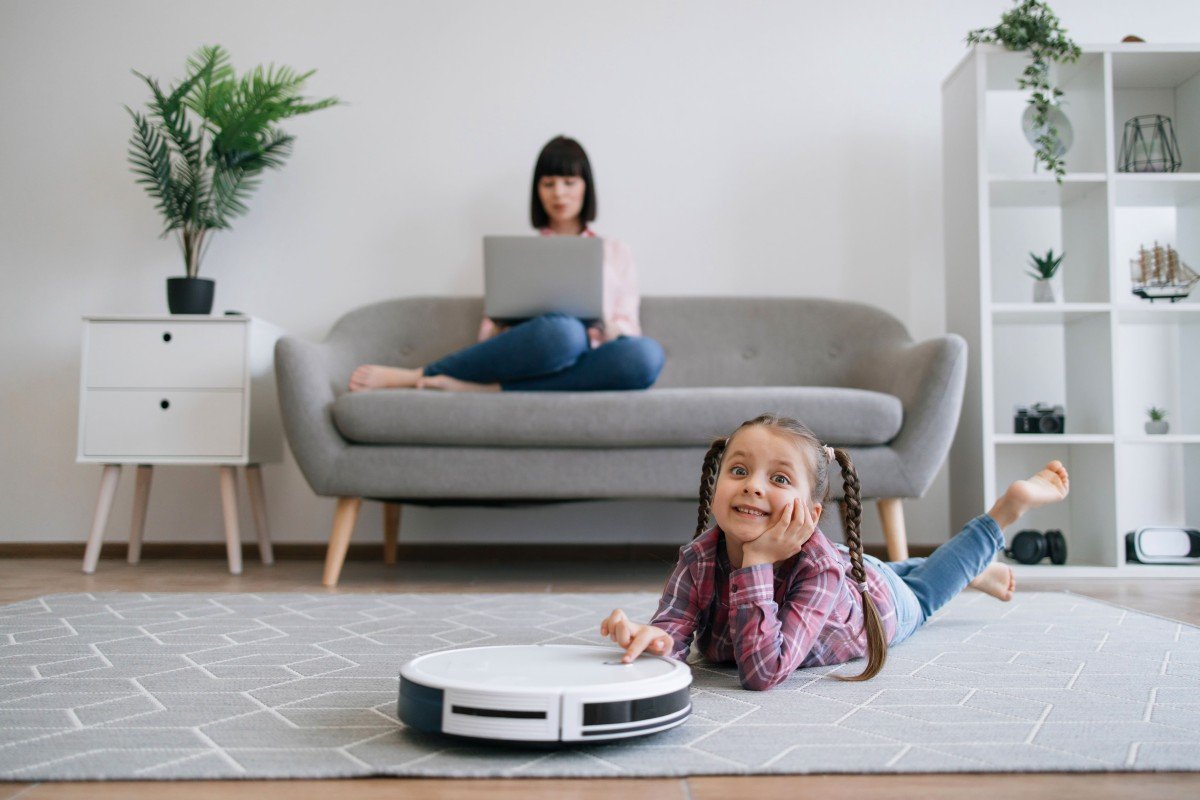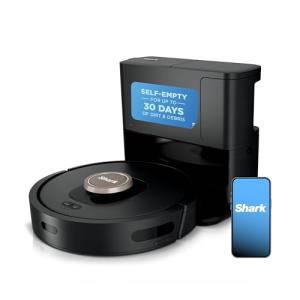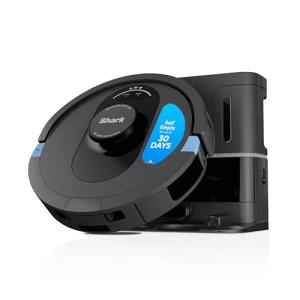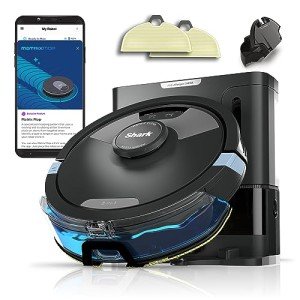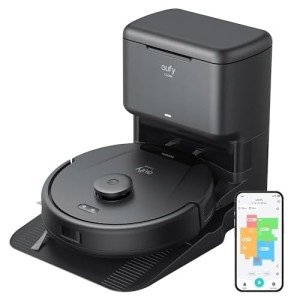Robotic vacuum cleaners have revolutionized the way people clean their homes, making the tedious task of vacuuming a lot more convenient and hassle-free. These small, disc-shaped devices are equipped with intelligent technology that allows them to navigate around obstacles, reach tight spaces, and clean different types of surfaces effectively. In this article, we will explore how robotic vacuum cleaners work, their history, components, sensors, navigation technology, cleaning mechanisms, advantages, limitations, popular brands, factors to consider when buying one, tips for maintenance, FAQs, and more.
How do robotic vacuum cleaners work?
Robotic vacuum cleaners are automated cleaning devices that can navigate through a space, detect obstacles, and clean floors without human intervention. They are equipped with sensors, motors, wheels, brushes, and batteries that work together to ensure efficient cleaning. When turned on, a robotic vacuum cleaner follows a pre-programmed path or uses intelligent navigation technology to move around a room, avoiding obstacles and adjusting its cleaning pattern based on the layout of the space.
History of robotic vacuum cleaners
The concept of a robotic vacuum cleaner dates back to the late 1990s when companies like Dyson and iRobot started developing prototypes for autonomous cleaning devices. In 2002, iRobot introduced the Roomba, the first commercially successful robotic vacuum cleaner that became popular for its convenience and effectiveness in cleaning floors. Since then, robotic vacuum cleaners have evolved significantly in terms of design, features, and performance, becoming a common household appliance in many homes around the world.
Components of robotic vacuum cleaners
Robotic vacuum cleaners consist of several key components that work together to ensure efficient cleaning. Some of the essential components include:
- Motor: Powers the wheels and brushes of the robotic vacuum cleaner.
- Wheels: Allow the device to move around and navigate different surfaces.
- Brushes: Sweep dirt and debris from the floor into the vacuum.
- Sensors: Detect obstacles, cliffs, and dirty areas for efficient cleaning.
- Battery: Provides power for the robotic vacuum cleaner to operate.
- Dustbin: Collects dirt and debris during the cleaning process.
- Navigation system: Guides the robotic vacuum cleaner through a space while avoiding obstacles.
Sensors used in robotic vacuum cleaners
Robotic vacuum cleaners are equipped with various sensors that help them navigate through a space, detect obstacles, and adjust their cleaning patterns. Some of the common sensors used in robotic vacuum cleaners include:
- Cliff sensors: Detect drop-offs or stairs to prevent the device from falling.
- Bump sensors: Detect obstacles in the path of the robotic vacuum cleaner.
- Dirt detection sensors: Identify dirty areas that require additional cleaning.
- Wall sensors: Detect walls and furniture to avoid collisions.
- Infrared sensors: Help the device navigate in low-light conditions.
- Drop sensors: Prevent the robotic vacuum cleaner from falling off edges.
Navigation technology in robotic vacuum cleaners
Robotic vacuum cleaners use advanced navigation technology to move around a space efficiently and clean floors effectively. Some of the common navigation technologies used in robotic vacuum cleaners include:
- Random navigation: The robotic vacuum cleaner moves in a random pattern until it covers the entire area.
- Reactive navigation: The device reacts to obstacles and changes its path accordingly.
- Mapping technology: Some high-end models use mapping technology to create a digital map of the space for systematic cleaning.
- Laser and camera-based navigation: These technologies provide more accurate mapping and navigation capabilities for precise cleaning.
Cleaning mechanisms of robotic vacuum cleaners
Robotic vacuum cleaners use various cleaning mechanisms to remove dirt, dust, and debris from different types of surfaces. Some of the common cleaning mechanisms include:
- Sweeping brushes: Rotating brushes sweep dirt into the vacuum cleaner's path for suction.
- Suction power: Powerful motors create suction to lift dirt and debris off the floor.
- Filters: HEPA filters trap fine particles and allergens for cleaner air.
- Mopping function: Some robotic vacuum cleaners come with a mopping function for wet cleaning.
- Dual brushes: Two brushes work together to agitate and lift dirt for thorough cleaning.
Advantages of using robotic vacuum cleaners
Robotic vacuum cleaners offer several advantages over traditional vacuum cleaners, making them a popular choice for busy individuals and households. Some of the benefits of using robotic vacuum cleaners include:
- Convenience: Robotic vacuum cleaners can clean floors autonomously, saving time and effort.
- Efficiency: The intelligent technology and sensors ensure thorough cleaning of different surfaces.
- Accessibility: Robotic vacuum cleaners can reach tight spaces and under furniture that are difficult to clean manually.
- Customization: Many models offer customizable cleaning schedules and modes for personalized cleaning.
- Quiet operation: Robotic vacuum cleaners operate quietly, making them ideal for use during the day or night.
Limitations of robotic vacuum cleaners
While robotic vacuum cleaners offer many benefits, they also have some limitations that users should be aware of. Some of the limitations of robotic vacuum cleaners include:
- Limited capacity: The dustbin of robotic vacuum cleaners is usually smaller than traditional vacuum cleaners, requiring frequent emptying.
- Battery life: Robotic vacuum cleaners need to be recharged frequently, especially when cleaning larger spaces.
- Complexity: Some models may be complex to set up and maintain, requiring regular cleaning and maintenance.
- Navigation issues: Certain spaces with cluttered layouts or dark corners may pose challenges for robotic vacuum cleaners.
- Cost: Robotic vacuum cleaners can be more expensive than traditional vacuum cleaners, depending on the brand and features.
Popular robotic vacuum cleaner brands
There are several popular brands that manufacture robotic vacuum cleaners, each offering a variety of models with different features and capabilities. Some of the top robotic vacuum cleaner brands include:
- iRobot: Known for its innovative technology and high-performance robotic vacuum cleaners.
- Eufy: Offers affordable robotic vacuum cleaners with strong suction power and long battery life.
- Ecovacs: Known for its smart navigation technology and advanced features in robotic vacuum cleaners.
- Shark: Manufactures powerful robotic vacuum cleaners with self-cleaning brush rolls and mapping capabilities.
- Narwal: Produces sleek and modern robotic vacuum cleaners with smart connectivity features.
- Lefant: Specializes in robotic vacuum cleaners with laser mapping technology for precise cleaning.
Factors to consider when buying a robotic vacuum cleaner
When choosing a robotic vacuum cleaner, there are several factors to consider to ensure that you select the right model for your needs. Some of the key factors to keep in mind include:
- Battery life: Look for a robotic vacuum cleaner with a long battery life to cover larger areas.
- Suction power: Consider the suction power of the device to ensure effective cleaning on different surfaces.
- Navigation technology: Choose a model with advanced navigation technology for efficient cleaning.
- Dustbin capacity: Check the dustbin capacity of the robotic vacuum cleaner to minimize emptying frequency.
- Noise level: Select a model with quiet operation if you prefer minimal noise during cleaning.
- Smart features: Consider additional features such as app control, scheduling, and mapping capabilities for added convenience.
Tips for maintaining a robotic vacuum cleaner
To ensure optimal performance and longevity of your robotic vacuum cleaner, it is essential to follow some maintenance tips. Some useful tips for maintaining a robotic vacuum cleaner include:
- Regular cleaning: Clean the brushes, filters, and sensors of the robotic vacuum cleaner regularly to prevent clogs and maintain efficiency.
- Empty the dustbin: Empty the dustbin after each cleaning cycle to avoid overfilling and reduce the risk of blockages.
- Check for obstructions: Remove any obstacles or debris that may obstruct the wheels or brushes of the robotic vacuum cleaner.
- Keep the charging station clear: Ensure that the charging station is easily accessible and free from obstructions for seamless recharging.
- Update software: Check for software updates for your robotic vacuum cleaner to improve performance and access new features.
- Replace parts when needed: Replace worn-out brushes, filters, and batteries as needed to maintain optimal cleaning performance.
FAQs about robotic vacuum cleaners
1. Are robotic vacuum cleaners effective in cleaning different types of surfaces?
Yes, robotic vacuum cleaners are designed to clean various types of surfaces, including hardwood floors, carpets, tile, and laminate. They adjust their cleaning mode and suction power based on the surface for efficient cleaning.
2. How do robotic vacuum cleaners navigate around obstacles and furniture?
Robotic vacuum cleaners use sensors, cameras, and mapping technology to detect obstacles and furniture in their path. They then adjust their cleaning pattern and navigation to avoid collisions and ensure thorough cleaning.
3. Can robotic vacuum cleaners be scheduled to clean at specific times?
Yes, many robotic vacuum cleaners come with scheduling features that allow users to set specific cleaning times and days. This feature enables users to automate the cleaning process and maintain a clean home.
4. Do robotic vacuum cleaners work on multiple levels of a home?
Some robotic vacuum cleaners are equipped with advanced navigation technology that allows them to clean multiple levels of a home. However, users may need to set up boundary markers or virtual walls to restrict the cleaning area.
5. How long do the batteries of robotic vacuum cleaners last?
The battery life of robotic vacuum cleaners varies depending on the model and usage. On average, most robotic vacuum cleaners can clean for 60 to 120 minutes on a single charge before needing to recharge.
6. Can robotic vacuum cleaners be used to clean pet hair?
Yes, many robotic vacuum cleaners are designed to effectively clean pet hair and dander from floors and carpets. Look for models with strong suction power and tangle-free brushes for optimal pet hair removal.
Summary
Robotic vacuum cleaners have transformed the way people clean their homes by offering convenience, efficiency, and autonomy in the cleaning process. These intelligent devices use advanced technology, sensors, and navigation systems to navigate through a space, detect obstacles, and clean different surfaces effectively. While robotic vacuum cleaners have limitations, their numerous advantages make them a popular choice for busy individuals and households looking to simplify their cleaning routine. By considering factors such as battery life, suction power, navigation technology, and maintenance tips, users can select the right robotic vacuum cleaner to meet their cleaning needs.
Whether you are looking for a basic model or a high-end robotic vacuum cleaner with smart features, there are plenty of options available from top brands in the market. With proper care and maintenance, a robotic vacuum cleaner can be a valuable addition to any home, keeping floors clean and dust-free with minimal effort.
